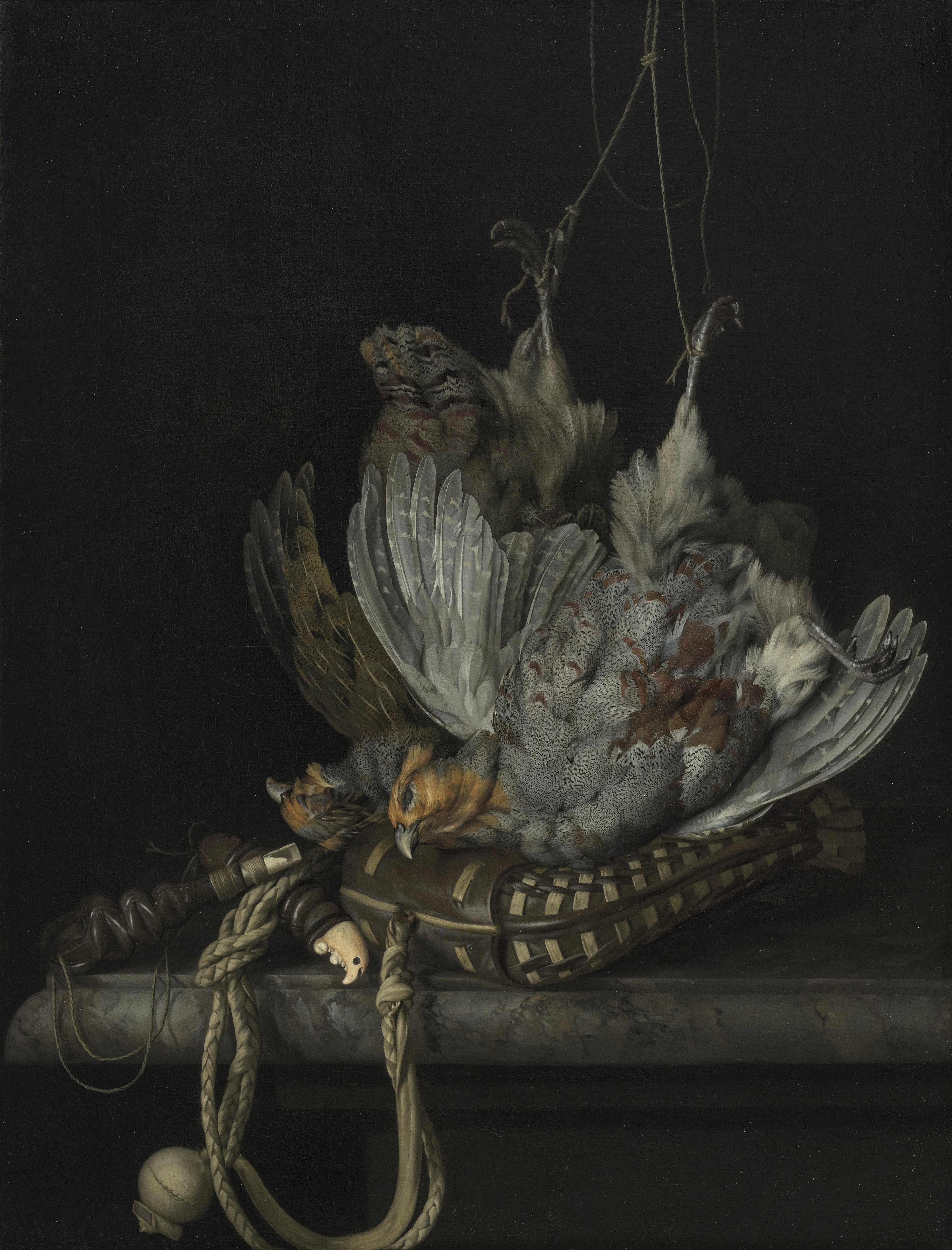
Willem van Aelst combined precise depictions of nature with mythological references in his hunting still life paintings. His work is exemplary of the detailed and symbolic still life art of the Dutch Baroque.
Hunting still life with symbolic power
Some freshly shot partridges, a popular quarry due to the low altitude at which they fly, are presented here in a simple niche. Their Latin name perdix refers to an episode from classic poetry, the Metamorphoses of the Roman poet Ovid (VIII, 236–259): the relevant passage tells how Perdix, or rather Talos, a highly talented disciple of Daedalus, aroused the envy of his teacher through special achievements such as the invention of the saw and compass, and while falling victim to an attempt on his life was then turned into a partridge by Minerva, the patron goddess of the crafts.
Willem van Aelst is one of the outstanding specialists in hunt still lifes which were particularly distinguished by their anatomical precision and closeness to nature. The painter began his artistic career in Delft, the centre of the “fijnschilderer” art movement famous for its craftsmanship and detail, which fascinated the European elite of art collectors until the 18th century. Aelst was also an extremely cosmopolitan artist who lived and worked, for example, in France and at the court of the Medici in Florence. The refined levels of taste in Amsterdam, a city which had been turned into a metropolis of luxury due to the prosperity of the so-called 'Golden Age', proved no less discerning. It was here that the painter spent the last decades of his life among a clientele as demanding as it was potent.
Text: Ulrich Becker